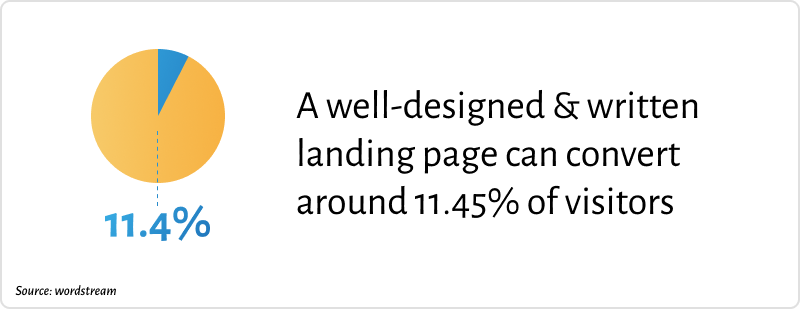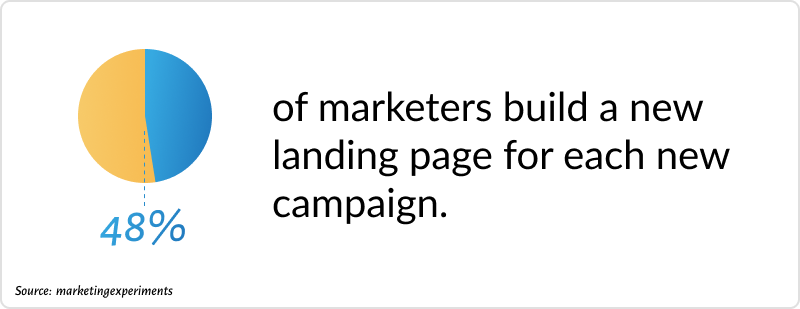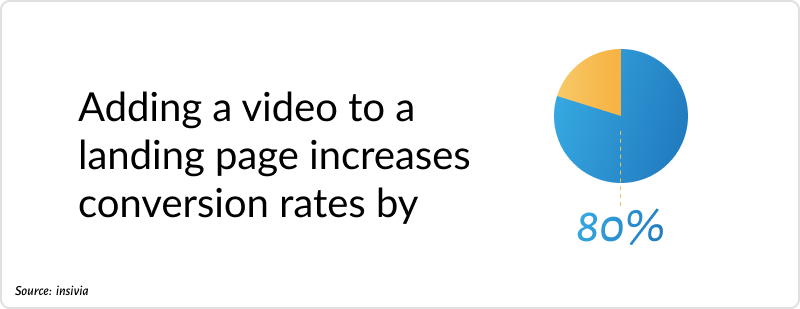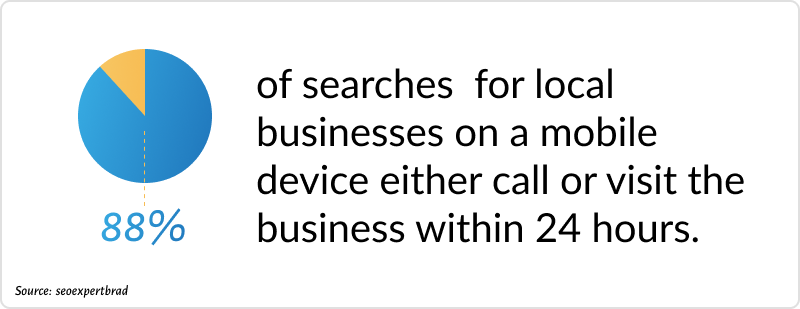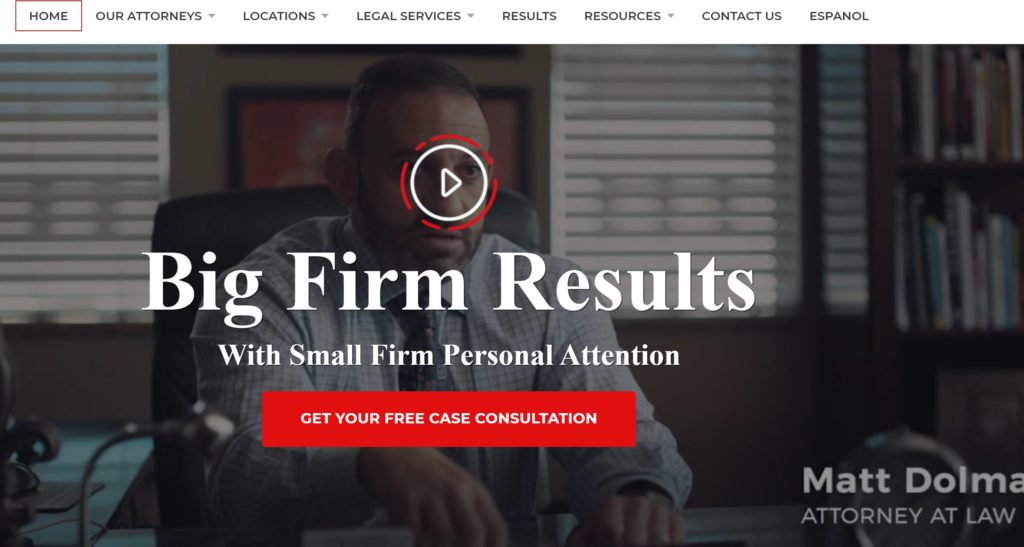Lawyers often rely on word-of-mouth marketing.
However, according to Clio, every 1 out of 3 people looking for legal service start their search online — before asking for referrals.
You’ll need to invest in modern, measurable law firm marketing strategies if you want to see your practice grow.
I specialize in providing search engine optimization (SEO) solutions to personal injury lawyers. That means I make it easier for your next client to find you out of the millions of other search results at their fingertips online.
Keep reading if you’re looking for lead-generating law marketing tactics.
- The Importance of a Law Firm Marketing Plan
- Marketing for Lawyers: Techniques that Work
- Landing Pages
- Testimonials & Case Studies
- SEO: Search Engine Optimization
- Website
- Website Content & Content Marketing
- Directories
- HARO (Help A Reporter Out)
- Video Marketing
- Social Media
- Build Your Law Firm’s Marketing Strategy in 5 Steps
- Step 1: Identify Your Target Audience
- Step 2: Set a Marketing Budget
- Step 3: Determine Marketing Goals
- Step 4: Select the Best Marketing Strategies for Your Law Firm
- Step 5: Measure Your ROI and Track Efforts to Improve
- Grow Your Law Firm with the Right Marketing Plan
The Importance of a Law Firm Marketing Plan
The adage, “If you build it, they will come” doesn’t always work.
If you don’t make yourself easy to find in a Google search, you starve your business of potential leads.
With that in mind, many law firms jump straight into blogging, social media marketing, or paying for an obscene amount of PPC ads. This impulsive marketing is dangerous to your budget and your brand. You can spend thousands of dollars (and hours) on marketing and still not see any results.
According to a Martindale study, 26% of lawyers don’t track their leads. That means over a quarter of your competition is investing in marketing strategies without bothering to study the results.
Roughly 86% of lawyers neglect to gather email addresses, another tactical error that could separate you from the pack — if you know how to leverage that information strategically (Law Technology Today).
You can ensure a positive ROI by setting a marketing budget and deploying proven law firm marketing strategies (like the ones in this guide).
Marketing for Lawyers: Techniques that Work
People looking online for a personal injury lawyer are usually already in need of legal assistance. According to a FindLaw U.S. Consumer Needs survey, 74% of prospects who search for an attorney online end up calling an office.
Optimize your website for search engines and become the firm prospects choose to call.
Prospects want to see that you’re an industry authority, have experience winning cases like theirs, and work well with your clients. They also want to enjoy the experience of sifting through your website.
Here are the best attorney marketing strategies for your law firm website:
Landing Pages
Your website’s landing page is where your site visitors “land” when they click one of your calls to action (CTAs) or ads.
Landing pages are relatively simple assets to create, but they can produce significant results. A well-designed landing page can convert roughly 11% of visitors.
Those conversions won’t happen by accident. You need to populate your landing page with content that motivates visitors to take action.
What are the Elements of a High Converting Landing Page for Lawyers?
Landing pages drive conversions with minimal effort. The most effective landing pages include the following elements:
- A clear explanation of the value you offer
- Proof of legitimacy in the form of certifications or badges
- Testimonials or statistics of cases won
- Content hyper-targeted to a specific audience
It doesn’t require a massive amount of effort to include these elements, but relying on a template won’t cut it. Use A/B testing to evaluate the effectiveness of your pages.
Create multiple versions of a landing page and assess which ones do the best. Use heat maps to discover which sections of a landing page receive the most views for the longest period and cut out the sections that have little impact.
Where Should You Use Landing Pages?
Landing pages target a specific audience with unique needs. 48% of marketers build a new landing page for each new campaign. Linking to landing pages in your PPC ad campaigns is one of the best ways to drive traffic to these pages. It’s not the only way, though.
Include links to your landing pages in the following locations:
- Calls to action on Youtube videos and articles
- Bios on social media
- Your bylines on guest posts
- Articles that cite you
- Directories
Having a landing page at all is a smart marketing move, but the best results come from the most data-driven analysis. If you target your landing pages precisely, you can increase your conversions by up to 300% (SteelHouse).
Testimonials & Case Studies
If you’re not collecting testimonials from your clients about your services, then you’re neglecting to use some of the most powerful marketing tools at your disposal.
According to Big Commerce, using testimonials can generate up to 62% more revenue and make your website visitors 58% more likely to convert.
Think about it:
When you’re looking for a service or a product, you read the reviews. You want to know what others experienced to determine whether or not it’s legitimate and worth the investment. Prospective clients are just as curious about your law firm as they consider hiring you.
Case studies are just as valuable because they allow you to explain a problem you solved for your client. Essentially, you’re proving your expertise in the most comprehensive and convincing way possible.
Collect testimonials and case studies (or at least the number of cases you’ve won), then plaster them everywhere. They should appear in:
- Landing pages
- Your homepage
- Ads
- Google searches
- Directories
80% of consumers want brands to use storytelling in their marketing and case studies offer your firm a captivating way to take advantage of that demand.
SEO: Search Engine Optimization
Up to 96% of prospects searching for a lawyer begin with a search engine. SEO makes your law firm’s website more discoverable to search engines and that helps clients in your area who need a lawyer find you.
Searches for law firms are often high-intent and likely to convert. Because people in need of legal help are usually looking for a lawyer in their cities, these searches also tend to be local.
With these factors in mind, choose keywords that align with local searches for specific needs rather than generic law terms.
For example, including the keyword “personal injury lawyer in San Diego” is much more likely to match your target audience’s intent than the more generalized keyword, “personal injury lawyer.”
You can increase traffic on your law firm site by practicing the following SEO strategies:
- Adding relevant keywords to your metadata
- Adding long-form content to your site
- Schema markup for better indexing with search engines
- Launching a campaign to earn backlinks
- Adding your links to resource pages
- Make your site mobile-friendly
Mobile traffic coming from searches for local businesses could be worth fighting for. 88% of such searches call or visit the business within 24 hours.
Website
Your website should serve as the engine that drives all of your law marketing efforts.
Review pages, directories, bios, social media — all of it should direct traffic back to your landing pages and your website. Your website is the foundation of any digital marketing effort.
As your central hub, your website should include everything visitors need to determine whether or not you’re suitable for the job.
Take a Rankings.io client, Dolman Law Group, and their website, for example:
When you first enter their site, you see a catchy headline that tells you they’ll get you significant results while also providing the personal attention that clients crave. Then it provides a clear CTA to “get your free case consultation.”
If you continue to scroll down, they further emphasize that they get results by showing you their numbers.
The following section tells you who and where they serve. Here, Dolman Law Group incorporates geographic keywords that boost their website’s local SEO quality.
Scroll further and you see accolades, news appearances, a description of the cases they take on, the faces of their law group, and more.
They’re making it abundantly clear who can benefit from their service and they provide numbers and awards to back up their claims of success.
The rest of the pages on their site give a deeper look into the firm and any additional resources that may provide value to their audience. These supporting pages may also target high-value keywords relevant to their niche and location.
Their site also includes a live chat feature, giving users direct access to live support and providing immediate answers to their pertinent questions.
According to J.D. Power, 42% of people prefer to communicate via live chat. That makes live chat the #1 choice for online customers over email, social media, phone calls, or forums.
Website Content & Content Marketing
Content marketing entails everything from headlines and company mottos to blogs and ebooks.
Blogging is the most common form of content marketing, and for good reason: businesses that blog generate 67% more leads than those that don’t. It’s this fact that has pushed so many law firms to add a blog to their website.
According to a Finances Online report, there are nearly 31.7 million bloggers in the U.S., and collectively, they post approximately 6.9 billion blog posts every day. That means the competition for your readers’ attention is fierce.
Unless you’re writing on the topics your audience wants to read about and your articles have the answers your readers seek, you’re wasting an opportunity to convert them into leads.
When developing a content strategy and schedule for your blog, include the right mix of content to reach your engagement, traffic, and conversion goals. In other words, you need top of the funnel, middle of the funnel, and bottom of the funnel content:
- Top of the funnel content. Very broad content created solely for engagement. It essentially casts a wide net with general information, and some of those readers may stick around. This content is more likely to get shares, backlinks, and engagement.
- Middle of the funnel content. Content meant to answer specific questions or target a particular audience. It qualifies, and it sells. Typically middle funnel content includes case studies, thought leadership pieces, and proof of expertise.
- Bottom of the funnel content. Companies with products more commonly use this type of content. It includes comparison or pricing articles.
In blogging for a law firm, you typically don’t need bottom-of-the-funnel content. Comparing your law firm to another isn’t a typical search query for the industry. Your best strategy would be to create a mix of top and middle-funnel content, such as case studies, thought leadership pieces, success stories, and articles that answer general questions in your field.
Generating Content Ideas:
It can be a challenge to consistently create compelling content if you don’t know what to write. Here are a few ways to regularly come up with ideas for content that engages your audience:
- Interview your clients to write about their experience with you
- Keep a list of questions clients ask and write about the most common ones
- Speak to your clients about what concerned them the most when looking for a lawyer
- Survey your audience on social media (if they are engaged)
- Search Quora or Facebook groups for popular questions about hiring and working with a lawyer, as well as common legal questions in your field
Simply put, listening to your audience is the best way to ensure you’re meeting their needs. Engagement keeps them coming back for more, and with the right momentum, they’re more likely to work with you.
Directories
Lead generation can be as simple as adding your practice to law firm directories like Justia.com, FindLaw.com, and Avvo.com.
Listing your firm with a directory is one of the easiest ways to generate leads without much effort continuously. Add the information once and it continues to work for you over time.
Directories work because most potential clients don’t know where else to look. They can do a Google search, but they may feel lost seeing ads for legal firms and a few ranking pages. Directories make it easy to sort filter out firms that don’t apply to them or that don’t have great reviews.
There also tends to be a greater sense of trust on review sites or directories. Anyone can build a beautiful, convincing site with their best reviews, but are those reviews legitimate? What about the views the firm doesn’t want you to see?
Potential clients want to feel they can trust you. Hearing the good and the bad, as well as seeing these on a reputable directory that vets its listings, provides a greater sense of security in their search.
With just one listing in the right place, you could potentially bring in hundreds of leads. A FindLaw study found that 31% of the people who use search engines to find a lawyer end up using a directory. List your firm on multiple, highly relevant directories, and you might end up with a full caseload before you know it.
HARO (Help A Reporter Out)
Help A Reporter Out (HARO) is a platform journalists and bloggers (even for company blogs) use to find reputable quotes to feature in upcoming publications across various industries.
Experts, business owners, marketers, entrepreneurs, and even lawyers can sign up to receive daily emails with a list of questions within their industry. Browse these questions each day, answer those that relate to your business, your clients, or highlight your expertise. If the journalist decides to use your quote, they’ll reply days later to provide you with a link to the publication.
HARO is a great way to increase brand awareness across new audiences you weren’t able to reach before and highlight your expertise at the same time. It also provides a backlink to your site, which helps you rank better on Google.
There are a few best practices to using HARO, which will help you get selected for features in publications consistently:
- Keep your pitch short. They’re reading through a lot of them
- Provide specific advice; nothing generic
- Be polite, and offer them your email to reach out to if there are additional questions
- Provide a link for them to add to the article (a landing page is your best option)
If you answer one question each morning, your chances of selection are much higher. It’s one of the best marketing ideas for law firms, as it requires very minimal output.
Video Marketing
Youtube is the 2nd largest search engine after Google. Consequently, marketers consider video marketing to be the future of advertising because it yields even greater results than SEO.
Adding a video to a landing page increases conversion rates by 80%. Equally impressive is what a single video can do for your website.
Embedding just one video on your site makes it 53 times more likely that it will rank on the first page of a Google search.
While that sounds convincing, the way you use video marketing matters. The types of videos that work the greatest for law firms are:
- Testimonial or case study videos
- Explainer videos that dive deeply into a topic
- Webinars
There doesn’t seem to be too much opportunity in video marketing for legal firms, but there is a surprising amount of room for creativity in video marketing, and law firms have grown their audience to surprising numbers with video marketing across various mediums.
Adam Oremland for Oremland Law Group stands out as a prime example of how you can use video marketing creatively for the right audience.
https://www.instagram.com/p/CCYeiteH1s0/?utm_source=ig_web_copy_link
Adam creates fictitious personal injury cases and tells you what kind of results you can expect if you take that case to court. He tops it off with a caption that starts, “You tell me what happened, and I’ll tell you how you can get paid.”
He is humorous and authentic, which helps him connect to his audience.
By posting these videos to his Instagram account regularly and promoting them through Instagram stories, he’s built his audience to 168K followers.
You can also use video marketing to highlight your company culture, provide insight into the process of a case from start to finish, or showcase thought leadership on LinkedIn.
Social Media
Social media might seem like a straightforward medium.
You post, then people like and comment. Right? Right.
Except there are lots of brands posting everyday receiving little to no engagement on those posts at all.
On the other hand, the right strategy opens up your market to the 3.5 billion people using social media around the world.
To develop a following, increase engagement, and drive traffic and conversions, you need to follow a few best practices for your social media marketing:
- Post information that is directly valuable to your target audience
- Be consistent and post everyday
- Post a variety of content, including engaging copy along with video, images, or links to resources
- Monitor which posts receive the most engagement and which receive none at all to improve your content schedule
- Engage with your audience and answer every comment
- Tailor your content to the platform
Each social media platform has a unique language and audience.
For instance, if you’re on LinkedIn, you’re speaking to professionals. The content you’d share would be more formal and informative.
Posts on Facebook are far less formal, and there’s a greater emphasis on audience engagement than education.
Consistent posting and engagement can be tough to keep up, especially for busy lawyers. Take advantage of social media management tools that help to automate the process like Hootsuite and Sprout Social.
Build Your Law Firm’s Marketing Strategy in 5 Steps
Consistent marketing is hard work, but the process for developing an effective marketing plan is simple:
- Identify your target audience
- Set a marketing budget
- Determine marketing goals
- Select the best marketing strategies for your law firm
- Measure your ROI and track efforts to improve
We’ll spend the rest of this article breaking down each step.
Step 1: Identify Your Target Audience
You might think you already know your audience: “anyone who needs a personal injury lawyer” or “car accident victims.”
That isn’t enough information to build a truly effective marketing plan on.
You need to narrow your focus until you are left with a particular persona. To do this, ask yourself:
- What types of jobs do most of my clients have?
- What are their most common issues?
- Which clients have been the easiest to work with?
- What neighborhoods do my clients live in?
To determine which marketing tactics will resonate with your audience, you must discover:
- Where your audience spends most of their time
- What type of content do they react to the most (what content are they already consuming the most? Video? Blogs?)
- What are their biggest pains? What are they searching for when they come to you?
- What concerns your clients the most about working with a lawyer?
To know your audience, you have to be aware of their needs, fears, and interests. You can then use that information to speak directly to their intent.
Step 2: Set a Marketing Budget
Without setting a budget, you can quickly put more capital into your marketing efforts than you get out of them.
There are two ways to set your budget:
- Budget by strategy. Decide which marketing strategies you’d like to implement based on your audience assessment. This approach to budgeting makes more sense if you have a lot of cushion to work with.
- Budget by limits. Set aside a certain amount of your income for marketing, and determine which strategies will fit within that limited amount of capital.
Your marketing expenditures could include the following:
- Marketing tools and software
- An external marketing agency
- An in-house marketing team
- Strategy-specific marketing specialists
Setting a marketing budget is essential to meeting your ultimate goal: providing your audience with value.
Step 3: Determine Marketing Goals
Setting goals is instrumental to ensuring you’re using the right marketing strategies, in the right way, with the right content.
In most cases, goals boil down to just two metrics:
- Traffic and engagement. SEO strategies are designed to increase website traffic and social media can supplement your engagement goals.
- Lead generation. Drive leads by prioritizing social media ads, PPC ads, and landing pages.
Your marketing plan should aim to generate traffic and leads. The last step is determining which strategies will help you do that best.
Step 4: Select the Best Marketing Strategies for Your Law Firm
An effective marketing plan is defined by tactics that deliver both long and short-term results, including increased website traffic, lead generation, and higher conversion rates.
To select the best marketing strategies, you’ll need to identify the following:
- Which mediums your target audience uses (Facebook, Twitter, trade publications, etc.)
- How much time you have to dedicate to each task
- What your goals are
- Your marketing budget’s capacity
There are hundreds of strategies to use in marketing. The above are some of the most effective for marketing a law firm.
Implementing a combination of PPC ads, landing pages, social media marketing, and SEO is a great way to start. Over time, you’ll gain confidence in these marketing efforts, especially as you analyze their results.
Step 5: Measure Your ROI and Track Efforts to Improve
Monitoring your results is an essential element of marketing for long-term success.
If your caseload is increasing, learn to identify the marketing strategies that work from the ones that don’t so you can bulk up the effective ones and abandon the failures.
One way to track your marketing campaign is to use Google Analytics. Google Analytics allows you to monitor leads brought in by each social media channel and ad campaign.
Other helpful marketing analysis tools include the following:
- Bitly. This link shortener also allows you to track how many clicks you get for each link and where those clicks come from.
- Buzzsumo. A tool that helps you identify and keep track of your content shares and engagement. You can also set alerts for mentions of your site or name in other articles.
- Databox. A comprehensive way to monitor data from your Google Analytics and social media accounts on a single, easy-to-read dashboard.
No matter how you track your efforts, you must identify what works and what doesn’t so you can continue to improve and grow your clientele.
Grow Your Law Firm with the Right Marketing Plan
Now that you’ve got the rundown on law firm marketing, you know that your options are wide open. There are numerous practical ways to market your law firm, and the best way is the one that gets you started.
If you want your practice to grow, you’re going to have to implement several new strategies and revamp some old ones to keep up with your competition. It’s additional work, but it pays back in dividends if you know how to make the right moves.
We’re here to help along the way. Sign up for our newsletter below (we promise not to spam you) to get top-notch content about all things law firm marketing.

